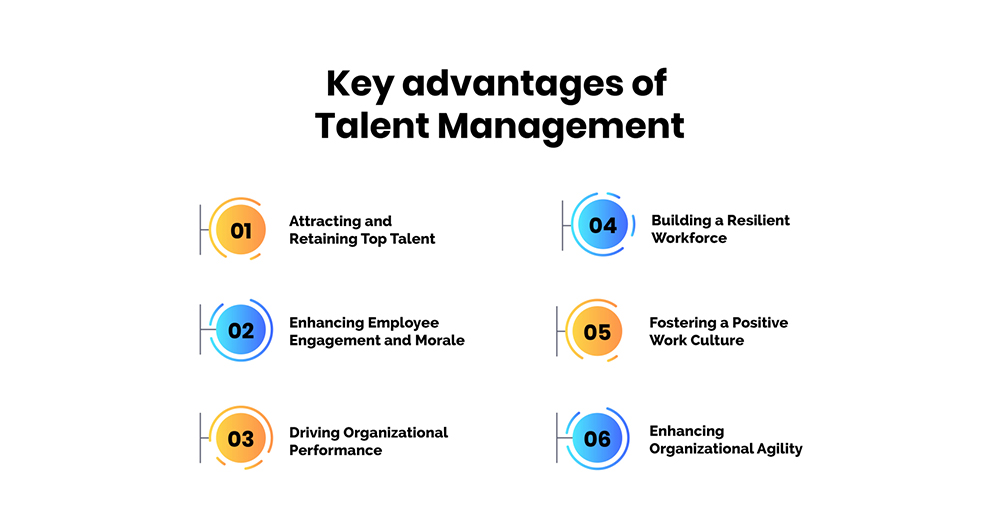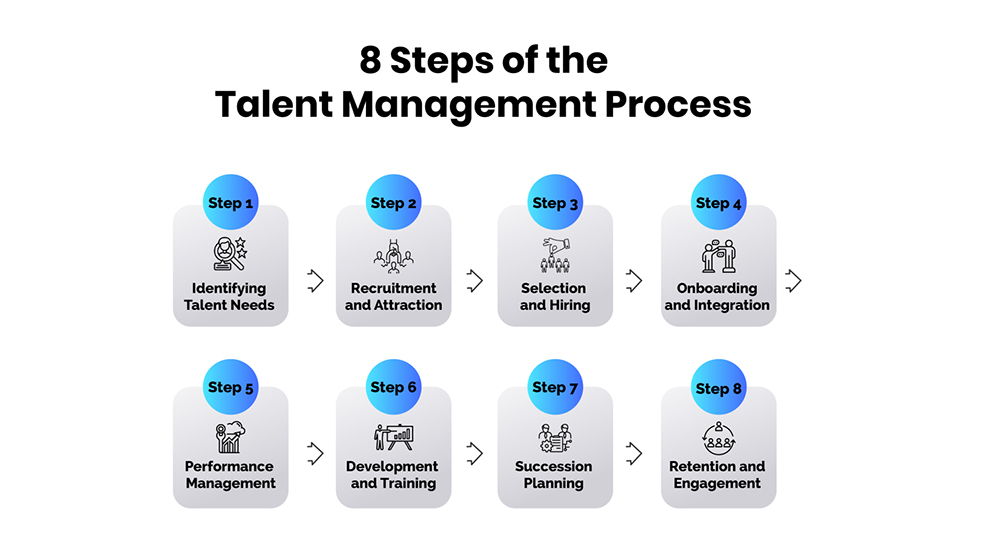
Talent management encompasses a strategic approach to identifying, attracting, developing, and retaining talented individuals who can drive business performance and innovation. This comprehensive process is designed to align organizational goals with individual capabilities, ensuring that the right talent is in place to meet current and future business needs.
Throughout this article, we will explore the key components of talent management, including its definition, benefits, and process. By understanding and implementing best practices in talent management, organizations can build a strong and agile workforce that is capable of navigating the challenges of today's competitive landscape.
Talent management is like being a talent scout for your own team. It's about finding the right people, nurturing their skills, and keeping them motivated and engaged.
At its core, talent management is about recognizing the unique abilities and potential of each employee and finding ways to help them grow and contribute to the organization. It involves creating a supportive environment where employees feel valued and empowered to reach their full potential. According to a McKinsey Global Survey, organizations with effective talent-management programs have a better chance than other companies of outperforming competitors.
One of the key aspects of talent management is attracting the right talent. This involves creating compelling job descriptions, reaching out to potential candidates through various channels, and showcasing the organization as an attractive place to work.
Once the right talent is on board, talent management focuses on development and training. This includes identifying areas for improvement, providing relevant training programs, and offering opportunities for growth and advancement.
Another important aspect of talent management is retention. This involves creating a positive work environment, recognizing and rewarding employees for their contributions, and providing opportunities for career development.
Talent management is about investing in your employees and building a team of skilled and motivated individuals who can drive the success of the organization. It's a continuous process that requires ongoing effort and commitment, but the rewards in terms of employee satisfaction, productivity, and organizational success are well worth it.
Talent management stands as a cornerstone of organizational excellence. It offers a multitude of advantages that propel businesses toward sustainable success. This strategic approach is not merely about filling positions but about cultivating a workforce that drives innovation, fosters growth, and maintains a competitive edge.

The key advantages of talent management are as follows:
Talent management is a strategic imperative that can drive organizational success. By attracting top talent, retaining key employees, enhancing performance, and fostering a positive work culture, organizations can create a competitive advantage that sets them apart in the marketplace.
The talent management process is a strategic approach that organizations use to attract, develop, and retain skilled and talented employees. It encompasses several key steps, each crucial for building a resilient workforce.

01. What are talent management roles?
Talent management roles include identifying talent needs, recruitment, onboarding, performance management, development, succession planning and retention.
02. What are the benefits of talent management?
The benefits of talent management include attracting top talent, improving performance, fostering a positive work culture, and maintaining a competitive edge.
03. What is the main objective of talent management?
The main objective of talent management is to attract, develop and retain skilled employees to drive organizational success.
04. What is the difference between the HR team and the talent management team?
The HR team focuses on overall employee-related aspects, while the talent management team specifically manages talent-related processes like recruitment, development and retention.
It is evident that talent management is more than just a series of steps, it is a strategic imperative for organizational success. To truly excel in talent management, organizations must adopt a holistic approach that encompasses recruitment, development, and retention of top talent.
Effective talent management requires a commitment to continuous improvement and a willingness to embrace change. By staying abreast of industry trends, leveraging technology, and fostering a culture of diversity and inclusion, organizations can create a competitive advantage in today's dynamic business environment.
Talent management is a key driver of organizational performance and success. By implementing best practices and staying true to the principles of talent development, organizations can create a loyal and determined workforce that is capable of meeting the challenges of tomorrow.

CredBadge™ is a proprietary, secure, digital badging platform that provides for seamless authentication and verification of credentials across digital media worldwide.
CredBadge™ powered credentials ensure that professionals can showcase and verify their qualifications and credentials across all digital platforms, and at any time, across the planet.

Please enter the License Number/Unique Credential Code of the certificant. Results will be displayed if the person holds an active credential from TMI.